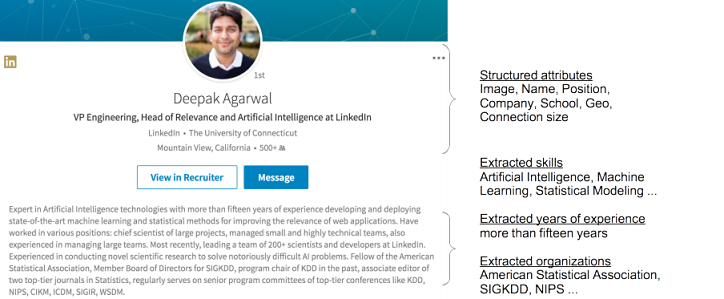In this contributed article, editorial consultant Jelani Harper highlights how knowledge graphs have become one of the foremost expressions of Artificial Intelligence today. Almost everyone—from vendors to organizations, analysts to regulators—relies on these applications at some point to compile, harmonize, and scrutinize specialized business information.
Accelerating Graph Technology Adoption
In this contributed article, Keshav Pingali, CEO and co-founder of Katana Graph, believes that graph technology’s need is apparent – and will be even more so in the coming years with 95% of businesses stating that managing unstructured data is a serious challenge. Highlighting successes and promoting interoperability with other libraries and data processing systems will ensure that graph technology has a bright future.
Franz’s Allegro CL® Used for Scheduling the Hubble Space Telescope Discovery of Earendel
Franz Inc., an early innovator in Artificial Intelligence (AI) and leading supplier of Graph Database technology for Entity-Event Knowledge Graph Solutions, announced that its Allegro CL (Allegro Common Lisp) dynamic object-oriented development system used by the Space Telescope Science Institute to develop the SPIKE Hubble Space Telescope observation scheduler has aided in the discovery of “Earendel,” the farthest star ever seen in the universe.
Why the World’s Biggest Brands Are Betting Big on Graph
In this contributed article, Todd Blaschka, Chief Operating Officer at leading graph analytics platform TigerGraph, discusses how graph has evolved to support digital transformation, AI, and machine learning — and it’s become a major competitive differentiator among the world’s leading companies. Organizations in virtually every industry — from financial services and healthcare to retail and manufacturing — use graph to understand their customers, reduce fraud risk, and optimize their global supply chains.
The Next Wave of Cognitive Analytics: Graph Aware Machine Learning
In this contributed article, editorial consultant Jelani Harper discusses a number of compelling and timely topics including manifold learning, graph embeddings, and cognitive computing.
The Amazing Applications of Graph Neural Networks
In this contributed article, editorial consultant Jelani Harper points out that a generous portion of enterprise data is Euclidian and readily vectorized. However, there’s a wealth of non-Euclidian, multidimensionality data serving as the catalyst for astounding machine learning use cases.
Knowledge Graphs 2.0: High Performance Computing Emerges
In this contributed article, editorial consultant Jelani Harper discusses The how increasing reliance on knowledge graphs parallels that of Artificial Intelligence for three irrefutable reasons. They’re the most effective means of preparing data for statistical AI, creditable knowledge graph platforms utilize supervised and unsupervised learning to accelerate numerous processes, and their smart inferences are a form of machine intelligence.
LinkedIn Knowledge Graph Enriches Data Value
In this contributed article, Qi He, Senior Engineering Manager – Machine Learning & Data Mining, Head of Data Standardization at LinkedIn, and Bee-Chung Chen, a Principal Staff Engineer & Applied Researcher at LinkedIn, discuss three LinkedIn strategies for enriching data value from the perspective of the Knowledge Graph.
Video: Why use Tables and Graphs for Knowledge Discovery System?
In this video from the 2016 HPC User Forum in Austin, John Feo from PNNL presents: Why use Tables and Graphs for Knowledge Discovery System? “GEMS software provides a scalable solution for graph queries over increasingly large data sets. As computing tools and expertise used in conducting scientific research continue to expand, so have the enormity and diversity of the data being collected. Developed at Pacific Northwest National Laboratory, the Graph Engine for Multithreaded Systems, or GEMS, is a multilayer software system for semantic graph databases. In their work, scientists from PNNL and NVIDIA Research examined how GEMS answered queries on science metadata and compared its scaling performance against generated benchmark data sets. They showed that GEMS could answer queries over science metadata in seconds and scaled well to larger quantities of data.”
When to Use a Graph Database vs. a Triple Store?
When should you use a graph database? In the same amount of time it took you to ask one question, we enable you to ask a thousand questions, making it more likely that you’ll discover the answer that gives you a “Urika” moment – and helps you gain competitive advantage.







